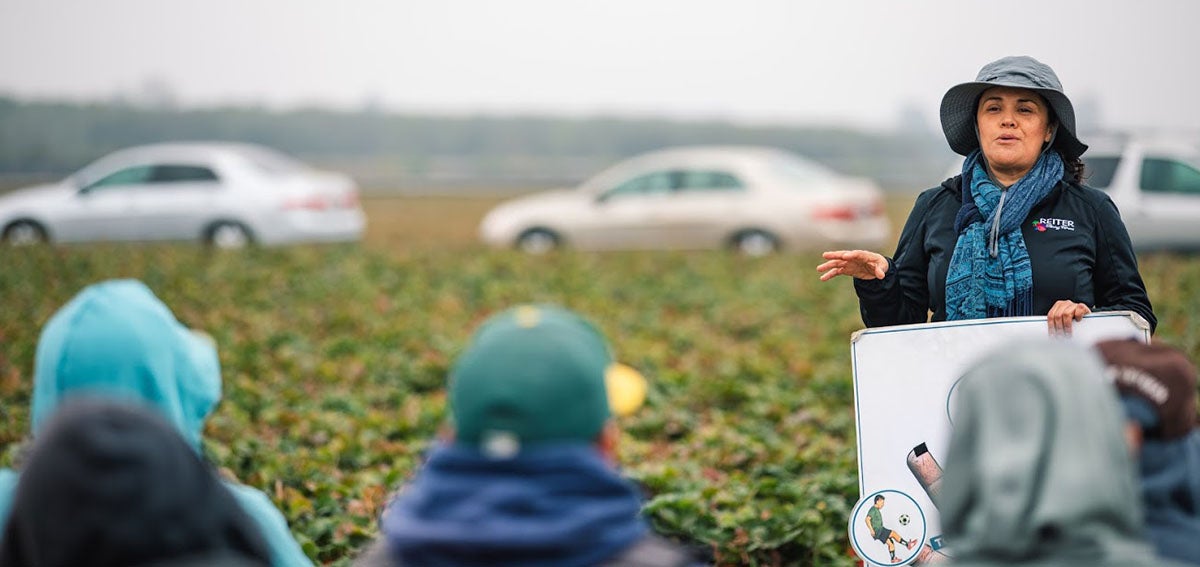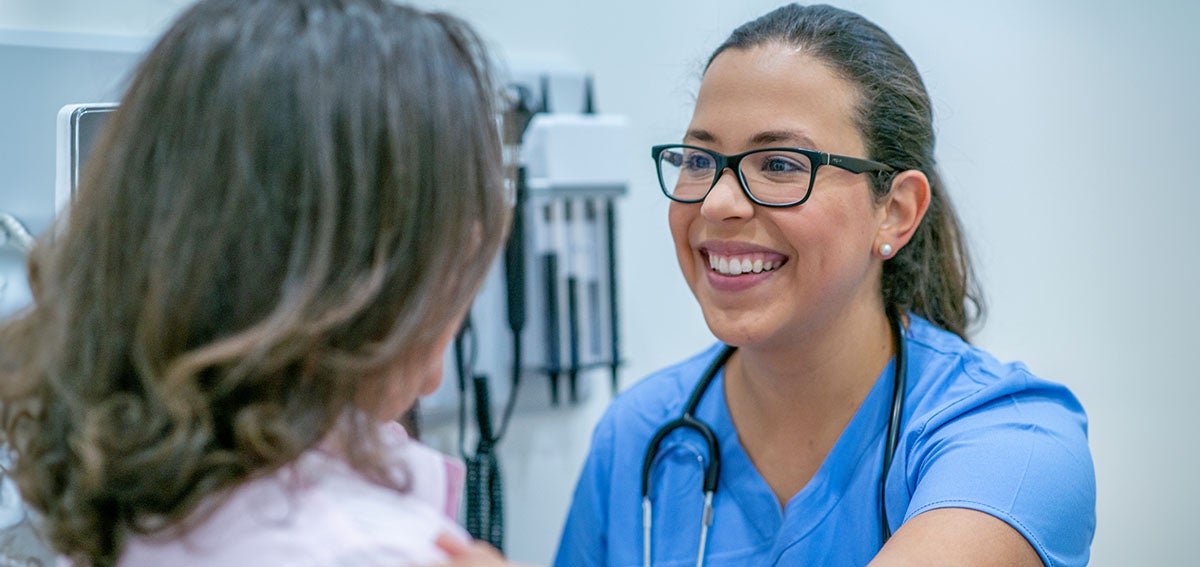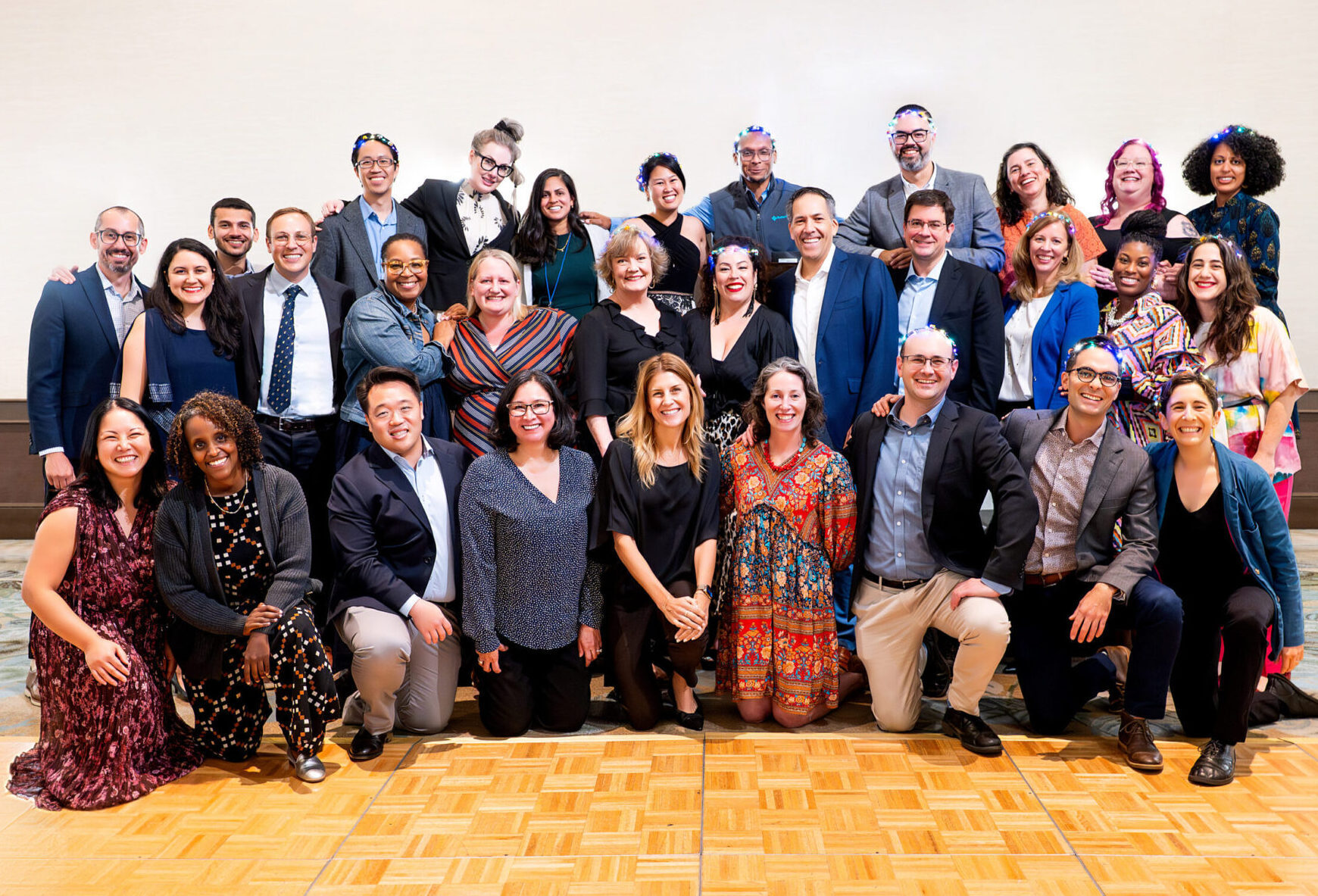
When the coronavirus pandemic struck California in March 2020, community health workers at a group of school-based family resource centers in Chula Vista made a pivot. The schools where they worked closed abruptly, and it was no longer safe to meet clients in person. They started working the phones, reaching out to families to find out what they needed. As it turned out, they needed a lot.
“They are desperate. They don’t have money to pay rent, to get food, or diapers for their children,” Aida Meza, a promotor de salud, or health worker, with the Chula Vista Community Collaborative, said in a June 2020 interview. “The first month, it was really crazy. They didn’t know where to go, what to do.”
She and her colleagues made wellness calls. “We made appointments to help them apply for services, to get food distributed, to get free testing for COVID,” said promotor Azucena Lopez de Nava, who works with Meza.
Community health workers (CHWs), recruited from their own communities, have been aiding Californians with low incomes for years to provide all kinds of assistance. They help people coming out of prison obtain primary care. They assist people with chronic conditions like asthma and diabetes to manage their symptoms and avoid their triggers. They arrange for social services to address clients’ needs. CHWs emerged as lifelines to many of the people in the state who were most impacted by the pandemic, delivering food and masks and helping arrange testing and vaccination. Far too often, they helped families who lost loved ones to COVID-19 cope with their grief and manage their needs.
Now California is poised to start what could be the biggest expansion of community health workers in state history. The 2021–22 budget establishes a community health worker benefit within the Medi-Cal program, allowing CHWs to be paid for providing benefits and services to Medi-Cal enrollees.
Remaining Hurdles
Big steps remain, however. The California Department of Health Care Services must develop a State Plan Amendment for submission to the federal Centers for Medicare & Medicaid Services (CMS). The document will describe the services CHWs can provide, the supervision and oversight requirements for the CHW workforce, payments and rates, and the training, experience, or credentialing required to become a CHW whose community-based organization can bill the Medi-Cal program for services provided. The goal is for the State Plan Amendment to be submitted this year and approved by CMS to take effect at the beginning of 2022.
“We are really excited about the opportunity that’s moving forward related to a community health worker benefit within Medi-Cal,” said Joel Ervice, associate director of the Oakland-based nonprofit Regional Asthma Management and Prevention, a project of the Public Health Institute. “One of the historic challenges with Medi-Cal is that, with limited exceptions, it does not reimburse for services provided by nonlicensed professionals like community health workers.”
The impending change should, for example, allow asthma home visitors — a specialized type of community health worker who visits people with asthma and helps them change their living spaces and habits to reduce their symptoms and avoid the emergency room. These workers have been shown to have a dramatic impact, Ervice said.
“Asthma home visiting services work,” he said. “They improve health outcomes. They reduce emergency department visits as well as missed days of school and work.”
Whole Person Care
In 2017, California’s Medi-Cal program began a $3 billion pilot program called Whole Person Care, part of the state’s current Section 1115 waiver, to better assist people burdened by complex medical and social challenges such as homelessness, incarceration, and frequent emergency department use. Most of the 25 pilot programs were organized by individual California counties. They focused on particular populations and worked to coordinate physical health, behavioral health, and social services — such as housing support and food assistance — in partnership with health plans and community-based organizations. Efforts to include CHWs will continue in the CalAIM initiative, a multiyear process led by the California Department of Health Care Services to improve the health outcomes and quality of life experienced by Medi-Cal enrollees. CalAIM is scheduled to begin January 1, 2022, and will likely continue many of the CHW efforts that were started in Whole Person Care.
All but five of the pilots hired CHWs to leverage their unique ability to develop a rapport with clients (PDF), according to an interim evaluation led by Nadereh Pourat, associate director of the UCLA Center for Health Policy Research.
“You can’t expect enrolled patients to just open up to anybody,” Pourat said. “Because of their lived experience and understanding of the issues, community health workers are better able to build trusting relationships.”
Many pilots assigned CHWs to multidisciplinary teams to work alongside physicians, nurses, social workers, and care managers. “Each one fulfills a different role,” said Pourat. “A physician doesn’t need to work with an individual to teach them how to do diabetes self-care. That’s not efficient or even effective. It might be a lot more effective if a peer with diabetes can work with someone. That kind of learning is probably a lot more effective than a doctor telling you to lose weight.”
A Profession for People with Big Hearts
Before he retired this year, Timothy Berthold spent many years at City College of San Francisco running a training program that graduated more than 1,200 CHWs — more than any other educational institution. Community health workers belong to a “relational profession,” Berthold said. “You have to be a people person, you have to have a big heart, you have to have compassion, you have to know how to listen. And that’s really the magic that helps people to make and sustain challenging behavior changes over time.”
The City College program now is being led by Darouny Somsanith, who started her career as a community health worker with Asian Health Services in Oakland before getting a master’s degree in public health from UCLA and shifting her line of work to education and training. In recent years, the program’s student enrollment was reduced by half due to funding cuts at the college. Somsanith aims to rebuild the training program and improve the status and compensation of CHWs, who earn $40,000 a year in many places and a median salary of only $60,000 in San Francisco, one of the most expensive US metro areas.
“We want to make sure that agencies don’t see CHWs as just cheap labor,” Somsanith said. “They also need to integrate CHWs into their organization and build up their professional responsibilities.”
She’s pleased to be in a role that rekindles memories of her first job after college and the pride she felt being a CHW. “Being in the role of community health worker — once you’re in it, you just love it,” Somsanith said. “It comes from the heart. You’re at the front line, and you just know that you make a difference.”
Authors & Contributors

Rob Waters
Rob Waters is an award-winning health and science writer whose articles have appeared in BusinessWeek, Mother Jones, Stat, San Francisco magazine, the San Francisco Chronicle Sunday magazine, the Los Angeles Times, and many other publications. He is the founding editor of MindSite, a digital publication covering mental health news scheduled to launch in fall 2021.





